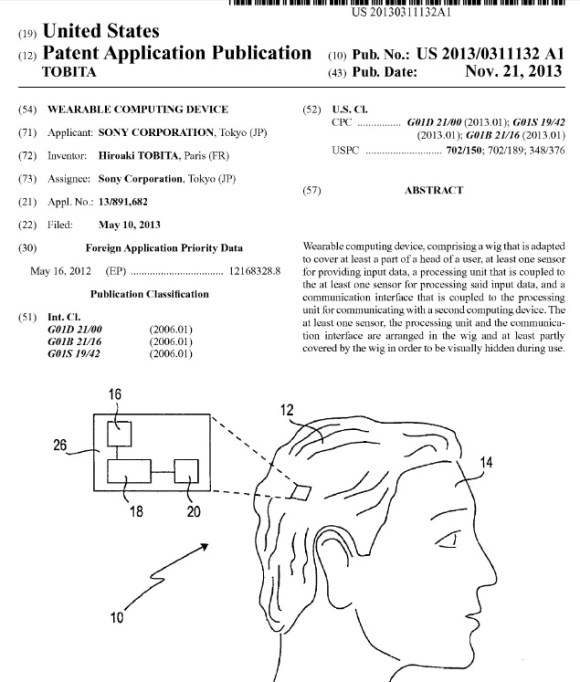
Smartphones are great and all, but they require your hands, which can be a problem when doing work, sports or raising the occasional barn. Then, along came Google Glass, a brand of smart glasses with promises of a more hands-free future. Unfortunately, it’s hard to interact with people and not have them stare at your right eye the entire time.
There must be a way to combine the discreet practicality of a smartphone with the hands-free functionality of smart glasses. According to an invention filed with the U.S. Patent Office this year, Sony appears to be interested something that just might do that with the “Smart Wig.”
According to the patent application, the Smart Wig (working title) would be a wig covering either all or part of the scalp with a built-in device that can connect with smartphones or other machines. What can be done with such a device is limited only by our imaginations – and the hair covering it up.
Several potential uses are outlined in the patent application, but many seem to involve vibrators to alert the user of something. For example, when linking to your mobile phone in silent mode, the vibration can be felt in your head rather than your pocket. Because the human scalp is highly sensitive, only a very slight, quiet vibration is needed. Sounds freaky.
Also, by adding a GPS receiver the vibrations could be used as a navigation system telling you to go right or left by simply tickling your head. Sensors or camera could also be added to the device allowing you to have literal eyes in the back of your head or real-life Spidey Sense.
Taking this concept even further, inventor Hiroaki Tobita speculates that the head-mounted sensors could be used to control other devices using only gestures or even by the slight muscle changes of facial expressions. You could turn on your microwave just by touching your tongue to your nose and wiggling your ears!
Aside from all the applications listed in the patent application, an added benefit of the Smart Wig is the human’s innate desire to protect their own head. Smartphones or smart watches carried in pockets, bags, or hands and wide open to bumps and drops. However, even if you were about to fall down a flight of stairs, you’re probably going to cover your head first protecting both your brain and your other smart device.
If there were one problem with the Smart Wig, it would probably be the fact it’s a smart… wig. Sure a fair number of people use wigs around the world, but are they enough to make a wig the host to such a device? A smart hat could probably do the all same things.
Granted a hat would be more conspicuous than a wig, and Tobita lists bald people, cosplayers, actors, and models as potential buyers. He even does admit that a smart hat isn’t out of the question. Still, judging by the outline he seems to think the Smart Wig is the best way to go.
On the other hand, for regular wig users, the smart wig could be a godsend. The sensors could be used to warn the wearer if their hairpiece is crooked or out of position. Also Tobita suggests that artificial muscles could be used as hair allowing for natural movement such as standing up when the wearer is scared or excited.
If this patent ever does come to fruition the Sony Smart Wig could definitely have some cool uses, albeit along with similar privacy concerns to that which Google Glass elicited. However, even though people say it’s all safe, I’m not sure I’d feel comfortable with a GPS receiver and Wi-fi enabled device pressed right up to my brain like that.
Source: US Patent & Trademark Office (English) via Engadget (Japanese)
Top Image: USPTO (pdf)